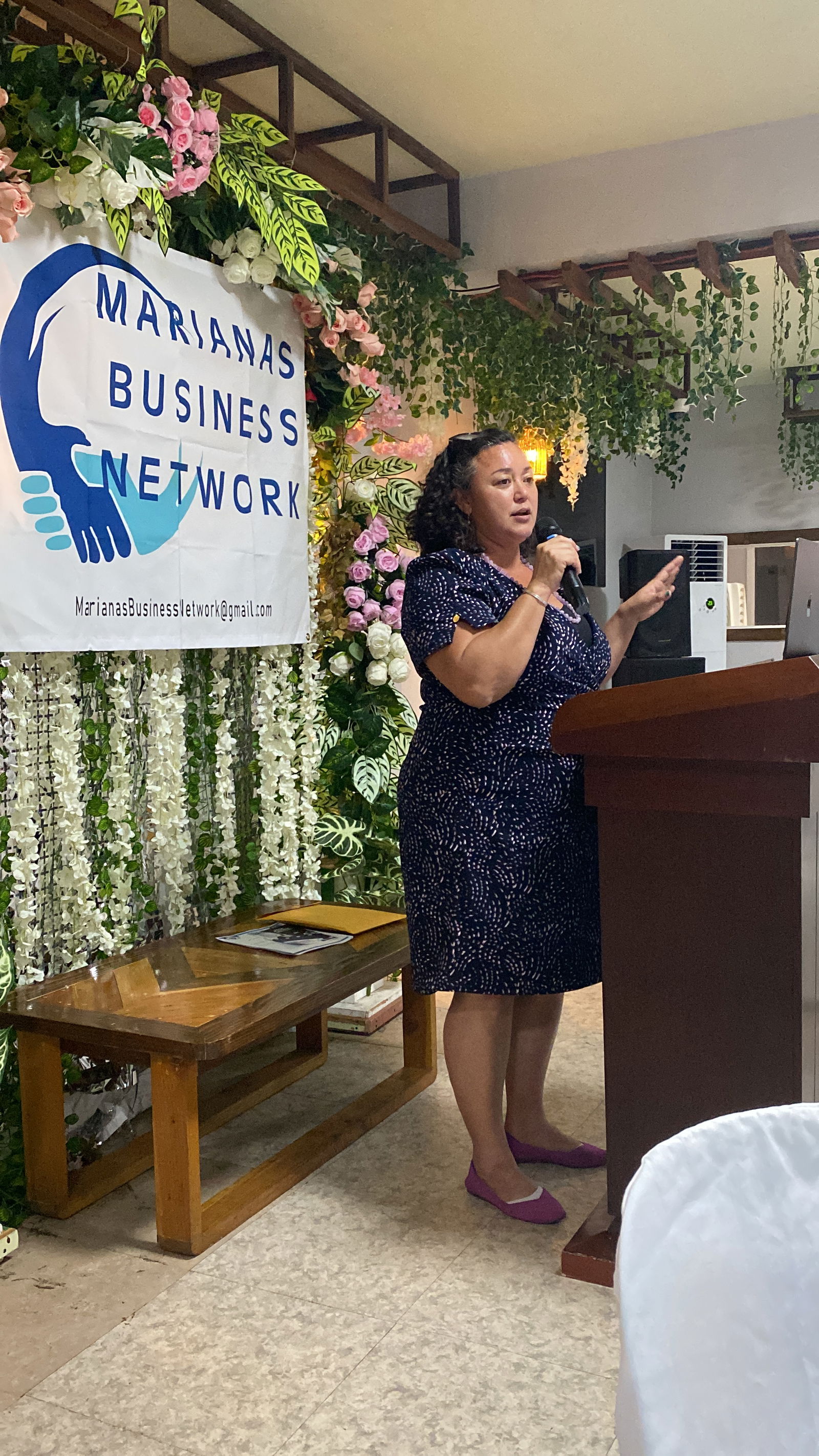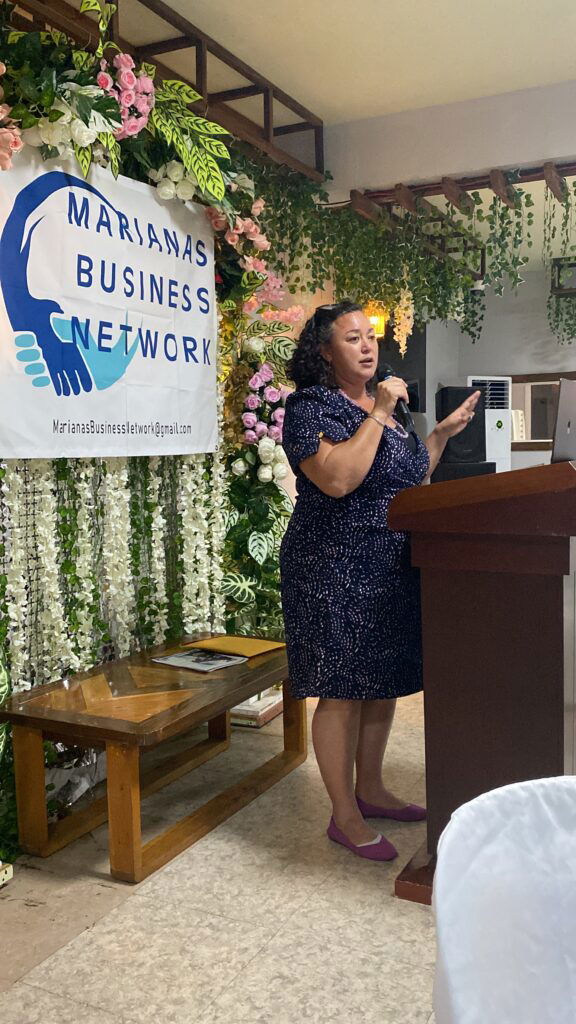
CNMI Department of Labor Secretary Leila Staffler speaks during a “collaborative dialogue” organized by the Marianas Business Network at Pepoy’s Restaurant on Thursday, Feb. 13.
CNMI Department of Labor Secretary Leila Staffler updated business owners about local labor trends and CW-1 visa developments at a “collaborative dialogue” organized by the Marianas Business Network on Thursday, Feb. 13, 2025.
During her presentation at Pepoy’s Restaurant, Staffler said there was a reduction in the number of job vacancies filled by CW-1 visa workers from 2022 to 2023.
According to data she shared with Variety, in 2022, 17,558 job vacancy announcements were listed on the Department of Labor website, with 27% or 4,740 of those vacancies filled by CW-1 visa holders. In 2023, there were 22,822 job vacancy announcements, with 19% or 4,336 filled by CW-1 holders.
There were 21,131 job vacancy announcements posted in 2024, but the CW-1 visa holder data has yet to be computed.
Construction and extraction jobs were the most in demand, with over 8,000 job vacancy announcements posted on the CNMI DOL website in 2024, Staffler said.
The second most in demand were installation, maintenance and repair jobs of which about 4,000 vacancies were posted, she said.
Staffler said these occupational fields have been the most in demand for the past 10 years.
She said she also met with USDOL’s Office of Foreign Labor Certification about the delays in the application process that some businesses face when they seek CW-1 visas.
She said the foreign labor certification office is “scrutinizing” applications more carefully due to manpower companies.
“Many companies that were putting in [CW-1 visa] applications were not saying that they’re a manpower agency and if you don’t say it, they don’t look for those initial requirements,” she said. “Some of the delays that were experienced this year were because of that. Maybe some businesses that are not manpower agencies got mixed up in that because they were scrutinizing everybody to make sure that if you were a manpower agency you were following … regulations.”
In her remarks, Staffler noted that the CW-1 visa program is set to expire in 2029, and that its future is in the hands of the U.S. Congress and the Trump administration.
“What changes may come are so unknown,” she added.
She said there are labor shortages across the U.S. and other territories, adding that the current H-2 visa programs “don’t match us or any of the territories.”
“H-2s are what they call seasonal, which is summer, spring, winter, fall. … I envision either they change the definition of seasons for the territories … or make CW a permanent thing that all the territories should avail themselves of because it’s more flexible than the [H visa program].”
She said the deadline for CNMI DOL’s 1st quarter census of employment is April 30. The data collected by the census of employment informs CNMI DOL about how many workers are in the economy, what their visa types are if applicable, their salaries, occupation codes, and more.
“[The census data] can help us do more projecting and economic analysis. It can be very beneficial especially as we’re moving forward not really knowing what’s going to be happening with this CW program,” Staffler said.











